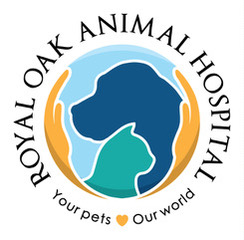Library
-
Foraging toys are great for dogs and cats. They can be filled with treats or with the pet's regular food as an alternative to feeding from a dish. They offer mental and physical exercise while also providing benefits from sensory stimulation as they search for their meals. Dogs in particular benefit from the opportunity to solve puzzles in order to access food.
-
Benign fibrous skin tumors can go by many names and in many cases don't need treatment. Surgical excision can be curative unless certain types are due to an underlying tumor elsewhere. The main focus in many cases is addressing underlying allergies or sources of pressure. To adequately diagnose these tumors, a biopsy and histopathology are usually necessary.
-
Bile acids are compounds that are made in the liver and stored in the gall bladder and help with digestion of foods. The bile acid test is a very useful test that helps to determine if the liver is working properly. An abnormal bile acid test result indicates there is a problem in the liver, but it does not provide information about the cause, severity, or reversibility of the problem. Further testing is required to investigate the problem.
-
Blepharitis (inflammation of the eyelid) can affect one or both eyes. The affected eyelid will usually be red, swollen, and itchy. Any condition that can cause irritation of the eyelids can lead to blepharitis. The numerous potential causes of this condition, along with the clinical signs, diagnosis, treatment, and prognosis are outlined in this handout.
-
This handout summarizes the possible reactions a cat may experience when receiving a blood transfusion. Many transfusion reactions occur acutely, within seconds of starting the transfusion up to 48 hours post-transfusion. The clinical signs and treatment protocols both vary based on the type of reaction. Prior to a blood transfusion, your veterinarian may perform tests to help ensure that the donor blood is a good match for your cat.
-
Body condition scoring is an effective objective method of determining if a pet is at a healthy weight. There are 2 scoring systems: one out of 5 and the other out of 9. This handout outlines how to body condition score pets and recommends tracking body condition score to keep pets at a healthy weight, an important factor in pets living longer with less health complications.
-
Brachycephalic airway syndrome refers to a particular set of upper airway abnormalities that affect brachycephalic cats. The most common sign of the condition is mouth breathing and, in the long term, the increased effort associated with breathing can put a strain on the cat's heart. Surgery is the treatment of choice whenever the anatomical abnormalities interfere with a cat’s breathing.
-
This handout summarizes breeding and queening (giving birth) in cats and the normal estrus (heat cycle). Pregnancy care and labor care are outlined, along with signs to watch for to determine if your cat is experiencing delivery complications.
-
The fastest way to examine large numbers of white blood cells is to look at a buffy coat smear. One of the most important cells to look for in a buffy coat is called a mast cell. Mast cells play an important role in allergies and related conditions. Mast cells can also form into tumors.
-
A burn is a type of skin injury, commonly caused by heat, fire, or chemicals. Burns are classified based on how many layers of skin are affected; this classification scheme can help predict prognosis. Treatment of burns varies, depending on the severity of the burn and how much of the body is affected. Superficial burns may heal without treatment, while more severe burns may require hospitalization and possible skin grafts.


